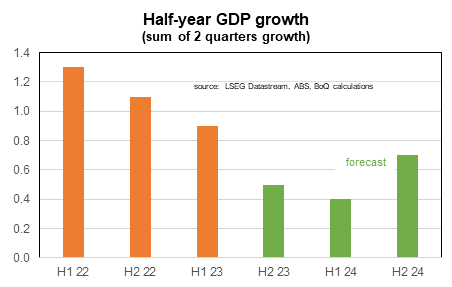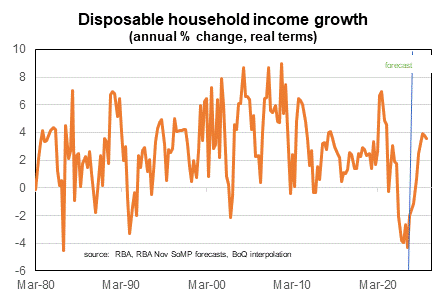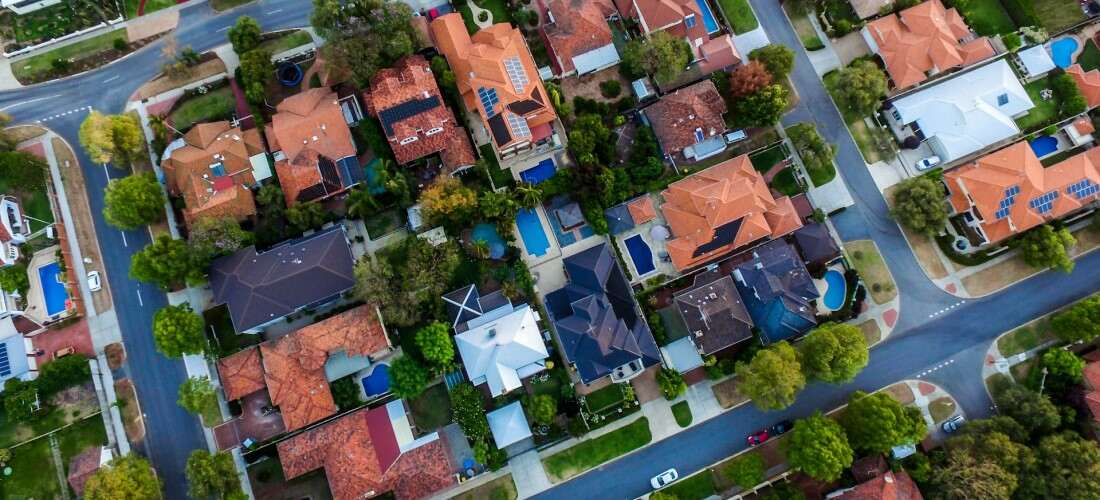
Economic Update: 2023 in review and a 2024 preview
Summary:
- The path of economic growth, unemployment and inflation rates have gone broadly as expected;
- But both the cash rate level and house price growth has been higher;
- Next year the economic tale will be one of two halves;
- We have likely hit peak cash rate. The first decline though may need to wait until 2025.
The tale of two halves
The profile of economic growth over the past couple of years has developed broadly in line with my expectations. From the middle of last year, it became obvious that the economy would benefit from a snapback in demand following the COVID lockdowns and strong fiscal and monetary support. Growth would then slow due to a combination of rising interest rates and high inflation crimping consumer spending. There was very strong GDP growth in the first half of last year followed by a still strong second half. There was decent GDP growth in the first half of this year but sub-trend in the second half.
This pattern of growth has become more obvious since upward revisions to the GDP numbers in the first half of this year and the second half of 2022. There may still be other revisions to come. Other economy-wide indicators (such as surveys of new orders, job ads and the underutilisation rate) tell a similar story as the revised GDP data.
I think we will see another (small) leg down in GDP growth in the first half of next year with a better economic performance in the second half.
The weakness of real disposable income growth has been the key driver of slow consumer spending. That growth will still be negative in the first half of next year (although less so than this year). That is one reason why I expect another step down in GDP growth. Weaker global economic growth, a decline in residential construction and less business investment into inventory will also be negatives.
In the second half of next year things will start to turn brighter. Real household disposable income growth will become positive, as wages growth likely exceeds inflation and the (probable) delivery of income tax cuts (offset by slower jobs growth). Much of the impact of the increase in the cash rate should be in the rear-view mirror. Financial markets are pricing in rate cuts next year in peer economies, and if delivered should mean better things for the global outlook.
An important factor determining how much stronger the economy will grow will be how much households decide to save from their additional cash flow. There could be some catch-up spending as high inflation has capped the volume of goods and services households could purchase over the past 12-18 months. But the current household saving rate is well below its pre-pandemic level. Higher interest rates are attracting households to put more money into deposits or repay debt. I think a decent number of households will want to boost their saving rate again and this will cap how much the economy will improve.


To read my full update, click here.
We live in interesting times.
Regards,
Peter Munckton - Chief Economist


